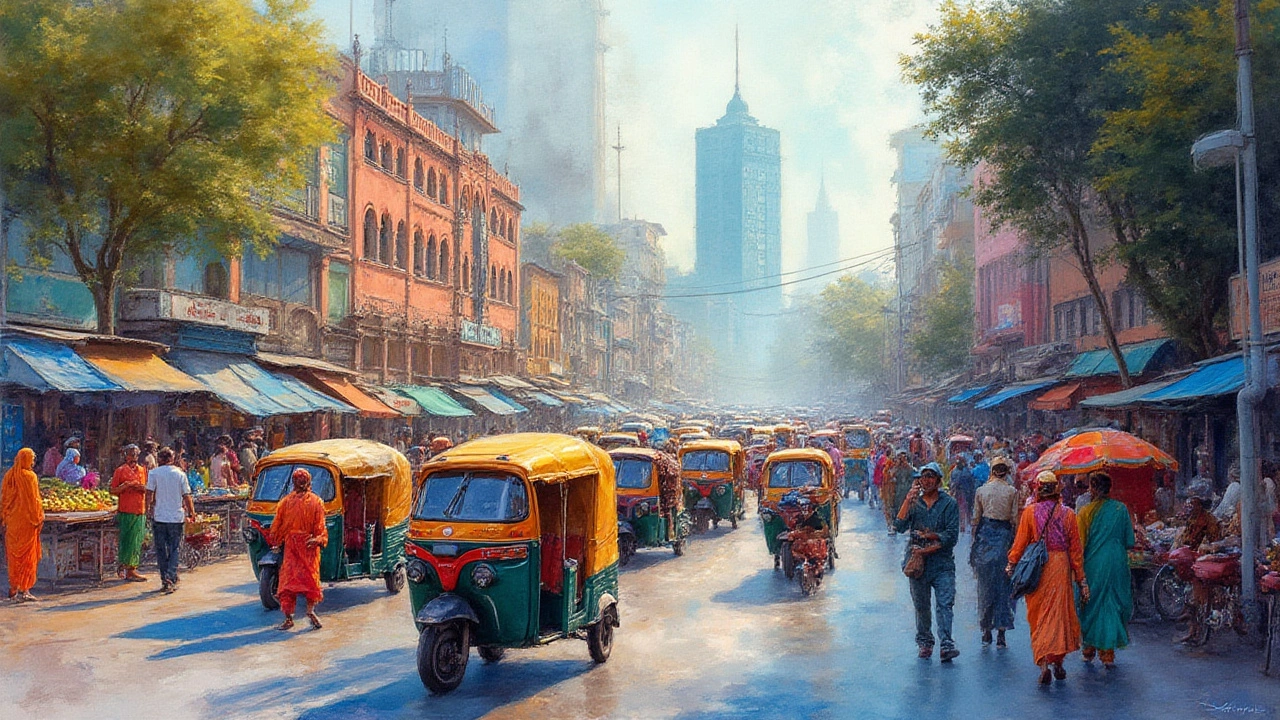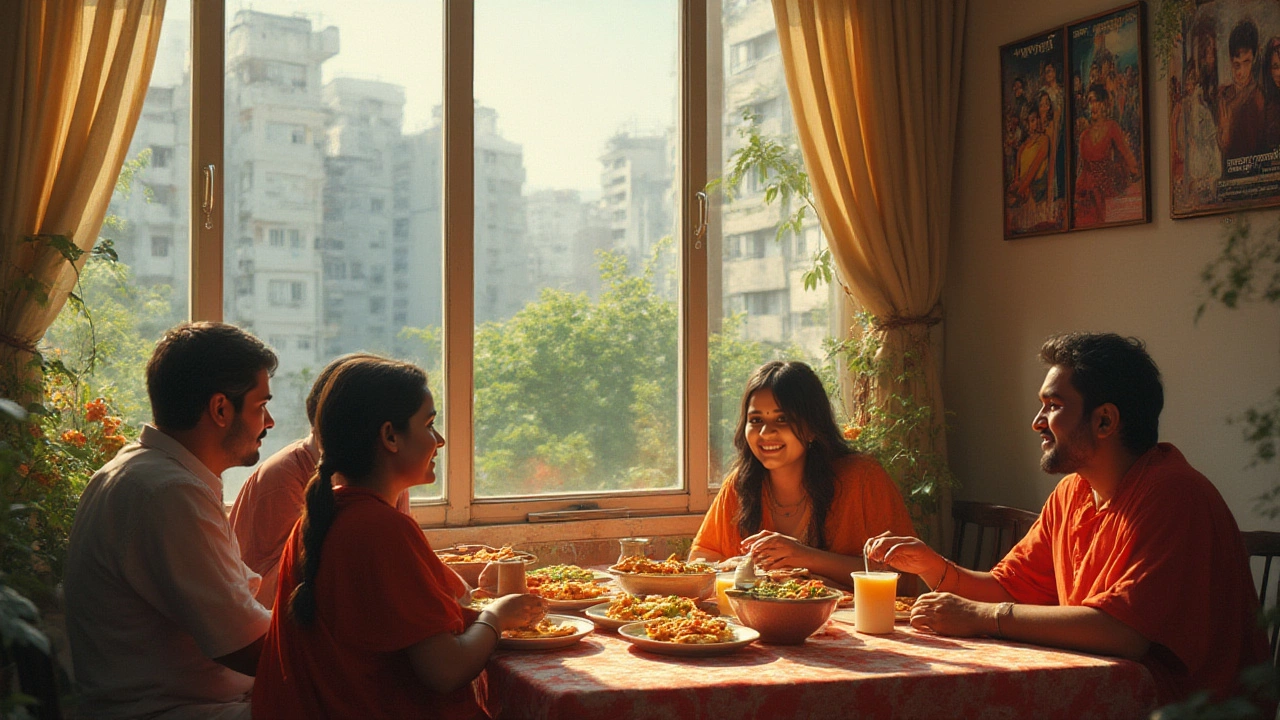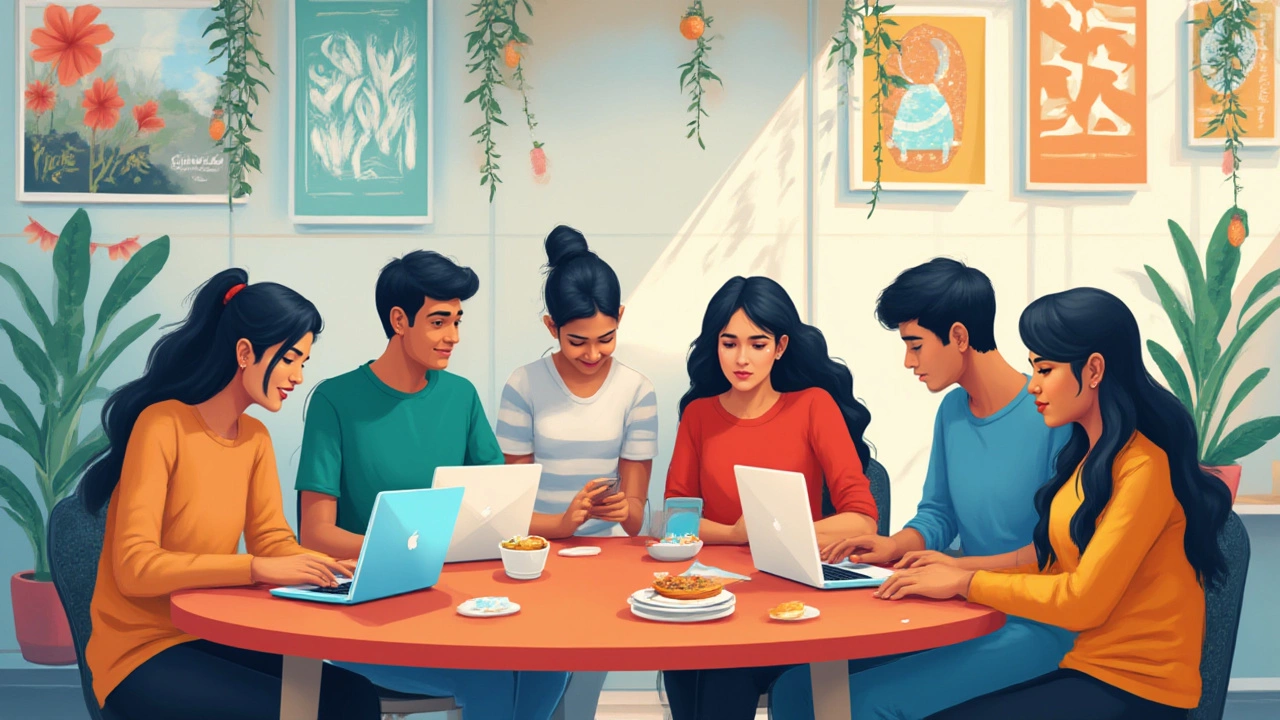Modern Life in India: Culture, Society, and Lived Experiences in 2025

You can spot a cow wandering the street outside a Starbucks, hear Bollywood music blaring from a tuk-tuk right beside a Tesla, and scroll your phone through cricket scores while waiting for train Wi-Fi. That’s India in 2025—a place where yesterday and tomorrow meet at every crosswalk, where ancient customs and brand new tech live side by side. Ask anyone about life here, and you’ll get a different answer. Some are glued to their phones, obsessed with the newest app, while others still sit down for chai with neighbors before dawn. What’s it actually like living in India right now? Hold on, because this is no one-size-fits-all story.
The Urban Surge: City Living in 2025
India’s cities have always had their own pulse, but in 2025, the beat’s gotten louder and faster. Cities like Mumbai, Bengaluru, and Hyderabad are the size of small countries, and they keep swallowing nearby villages as more rural folks head in looking for jobs and adventure. Here’s a wild number—Bengaluru, the so-called "Silicon Valley of Asia," now has over 15 million people. That’s more than the whole population of Sweden. New Delhi’s Metro welcomes over 4.5 million riders every day, which says a lot about just how tightly woven public transport is into city life—though, trust me, there’s always a sweaty crowd during rush hour.
High-rises shoot up at breakneck speed, gated societies offer gyms and pools, and there’s a new coffee shop opening almost every week. Groceries? One tap and they’re at your door in ten minutes, thanks to the explosion of ultra-fast delivery startups. Electric scooters buzz down side streets, and yes, there are charging stations at every mall and office park now. Even street vendors take digital payments, thanks to the UPI system, which processed over 17 billion transactions in June 2025 alone. People switch seamlessly between Hindi, English, and their mother tongue; it’s normal to overhear a sentence that jumps across three languages in one go.
Of course, it’s not all slick convenience. Skyrocketing rents push whole families into tight apartments, and the hustle to keep up never really stops. The air might sting your nose in winter if you’re in Delhi, where pollution is still a headache, and traffic can make a five-kilometer Uber ride a 45-minute ordeal. But then you’ll find an impromptu festival parade clogging the road, and suddenly, everyone’s out of their cars, drawn into the music and colors. City life here is a glorious jumble—chaotic, creative, and somehow, it all fits together.
Village Rhythms: Rural Life and Quiet Revolutions
Think India is all about crowded streets and noise? Take a detour to the countryside, where about 63% of the population still lives. In villages, the day starts before sunrise, with roosters crowing, women drawing water from communal taps, and farmers checking their fields for last night’s flood or drought. It’s a rhythm tuned more to the weather and seasons than traffic jams and work emails. But things are changing faster than outsiders expect. Twenty years ago, you’d have to walk to the next town to see a doctor. Now, telemedicine apps connect rural folks to city specialists, sometimes using solar-charged phones.
Kids in crisp uniforms pedal rusty bikes to government schools—some are getting smart classrooms, solar lights, even clean toilets, though there’s still a gap between dreams and reality. Villages that never saw a TV satellite now have Wi-Fi towers and cheap data plans, so even grandmas share viral videos on WhatsApp. Farming, the old backbone of the rural economy, isn’t what it used to be. Lots of young people leave for cities, but there’s a wave of returnees too, bringing new tricks—organic farming, eco-tourism, drip irrigation powered by crowd-funded solar pumps. One major trend: farmer producer groups, banding together so they can get better prices for crops without being squeezed by middlemen.
There’s quiet pride in village traditions—monthly temple fairs, folk dances, or the flavor of homemade pickles impossible to find in any city. Yet you’ll also meet rural teens itching to try out social media influencer life or launch a startup from their living rooms. The gap between India’s city and village is still huge, but you can literally see it shrinking with every cheap smartphone and paved village road.

The Social Mosaic: People, Family, and Changing Roles
Family is at the core of Indian life, but what that looks like shifts from house to house. In some homes, grandparents, parents, and kids all share a roof and meals—big, boisterous, everyone involved in everyone’s business. Elsewhere, young couples move solo into city micro-apartments, FaceTiming family hundreds of kilometers away. Weddings are still a festival—multi-day affairs glittering with music, flowers, and food for hundreds, but many young people are swapping tradition for low-key civil ceremonies or destination dos in Goa.
Old-school respect for elders still matters, yet the way people talk across generations is getting more relaxed. Daughters once kept home; now they battle for law degrees and top ranks in corporate Bengaluru. According to the 2021 census, women’s participation in the formal workforce crept up against the odds, and 2025’s numbers are likely better, though there’s still a bumpy road toward real gender equality. Conversations about mental health, LGBTQ+ rights, and dating moved from whispers to TV dramas and Insta reels—a leap from even five years back. But India still holds tight to its roots: people crowd temples during festivals, every guest is fed like royalty, and family WhatsApp groups still buzz from dawn till late night.
One quirky reality: school kids now juggle English, Hindi, and often a regional language, tackling everything from the Bhagavad Gita to Marvel comics, all before dinner. Arranged marriages are down, love marriages up, but parents often have the final say. And Indian society, for all its reputation for conformism, is way more diverse and self-aware than the headlines ever show. Over 22 major official languages, a hundred more dialects, and every religion you can name—it’s this mix that makes the country unpredictable, infuriating, and wildly interesting.
Tech, Money, and Hustle Culture
If you’re picturing cows and carts, pause and look up some Indian unicorn startups. By mid-2025, India has given the world over 125 billion-dollar startups, from fintech giants like Razorpay and Paytm to health apps, food delivery, ed-tech, and electric vehicle innovators. The country’s gig economy boomed: an estimated 90 million people now work for themselves, offering everything from content writing to teaching guitar on Zoom.
Payments? Tiny QR codes stuck on every fruit cart and stationery shop give everyone the power to get cashless. In fact, India led the world in digital payment volume last year—China came second. Flipkart and Amazon compete with nimble homegrown rivals like Meesho, who deliver everything from sarees to second-hand Samsung phones. Middle-class incomes have climbed, with the average urban salary in 2025 clocking in at about ₹35,000 (USD $420) per month, though the gap between rich and poor still bites hard. Investment apps target first-time investors, and the real estate market stays wild—Mumbai’s prime flats sell for more than New York penthouses.
The energy is relentless. Young entrepreneurs dream big, fail fast, and start over. Even office lunches spark side hustle talk. Tech-savvy grandparents use grocery apps and join their grandkids for Zoom yoga. The younger you are, the more you bet on upskilling—everyone’s busy shooting reels, running YouTube channels, or mastering AI tools, betting that the next big job hasn’t even been invented yet. For those eyeing a gig or startup life, be ready to hustle, network, and reinvent yourself every year.
life in India is now a mix of tech blitz, creative energy, and millions hustling for a better future while still keeping one sandal planted in tradition.
| Statistic | 2021 | 2025 (est.) |
|---|---|---|
| Population (millions) | 1,380 | 1,440 |
| Urbanization (%) | 35 | 38 |
| Internet Users (%) | 50 | 73 |
| Women in Workforce (%) | 22 | 27 |
| Digital Payments (billions/month) | 7.6 | 17 |
| Unicorn Startups | 61 | 125 |

Food, Festivals, and Frenzied Daily Life
If you want to understand Indian life, follow the food. Tiffin boxes stacked high on a courier’s bike, midnight dosa trips with friends, or a wedding thali with fifteen different sweets—eating isn’t just a ritual, it’s a mood. Even the busiest tech worker will queue for samosas at 5 pm. Home kitchens still grind fresh chutneys while, at the same time, fast-food chains serve up vegan biryanis and masala-flavored everything. Swiggy and Zomato riders zip through city traffic with thousands of orders a day. Meanwhile, regional recipes explode on YouTube channels run from every corner of the country, and foodie Instagrammers have driven forgotten local dishes into five-star hotel menus.
Daily life is tied up in religious and seasonal festivals—Holi water fights blow up Instagram every March; Diwali, Eid, Christmas, and Onam all roll into months of fireworks, rituals, and community feasts. Even tiny neighborhood events, like the local Ganesh visarjan, can stop city traffic as people spill into the streets to dance and pray. Indians have mastered celebrating—even during hard times. Work stops, shops shut, families gather, and for a moment, the grind just fades into the background chaos of colored powders, burning lamps, and shared food. There’s a festival for just about everything—goddesses, harvest, siblings, even a good monsoon.
That energy spills into the grind, too. Many people’s daily schedules veer from frantic—school runs at dawn, three-hour commutes, late-night exams—to the remarkably relaxed pace of cutting chai with friends, watching street cricket, or just doing literally nothing on a Sunday afternoon. Life in India today is unpredictable but rarely dull.